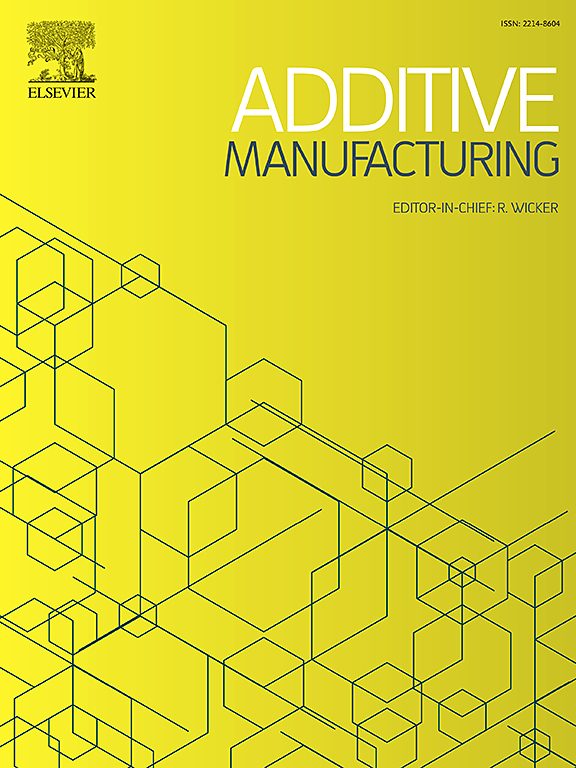Optimizing the microstructural and mechanical isotropy for the twin-wire directed energy deposition-arc fabricated Ti-48Al-2Cr-2Nb alloy via interpass remelting
IF 10.3
1区 工程技术
Q1 ENGINEERING, MANUFACTURING
引用次数: 0
Abstract
Twin-wire directed energy deposition-arc (TW-DED-arc) has demonstrated feasibility in fabricating TiAl alloys. Unfortunately, it is hard to simultaneously guarantee the effective product utilization, and suppress the anisotropy. To break the trade-offs, a novel depositing strategy of an interpass remelting (IR) process, a representative of low-carbon-friendly and easy-to-operate processing route, is designed to fabricate Ti-48Al-2Cr-2Nb (TiAl-4822) alloy without chemical adjustment. The results indicated that the IR process promoted high-fraction equiaxed grains of ∼90 %, much higher than that fabricated by constant process (CP). The IR process significantly increased the microstructural and mechanical isotropy of TW-DED-arc fabricated TiAl-4822 alloy. For microstructural isotropy, the IR process facilitated the growth of equiaxed grains with appropriate size, twin thickness refinement, and micro-segregation improvement. The IR process also strengthened the α2/γ phase interface and γ/γ twinning boundaries. For mechanical isotropy, the IR process generated superior tensile properties along different directions of TW-DED-arc fabricated TiAl-4822 alloy wall compared to CP process and other fabricating techniques. Meanwhile, the exceptional strength retention of about 97 % at 650 °C was maintained. This work provides a new perspective to optimize microstructure and mechanical properties of TiAl-4822 alloys, facilitating further development of TW-DED-arc and its application in aerospace industry.
求助全文
约1分钟内获得全文
求助全文
来源期刊

Additive manufacturing
Materials Science-General Materials Science
CiteScore
19.80
自引率
12.70%
发文量
648
审稿时长
35 days
期刊介绍:
Additive Manufacturing stands as a peer-reviewed journal dedicated to delivering high-quality research papers and reviews in the field of additive manufacturing, serving both academia and industry leaders. The journal's objective is to recognize the innovative essence of additive manufacturing and its diverse applications, providing a comprehensive overview of current developments and future prospects.
The transformative potential of additive manufacturing technologies in product design and manufacturing is poised to disrupt traditional approaches. In response to this paradigm shift, a distinctive and comprehensive publication outlet was essential. Additive Manufacturing fulfills this need, offering a platform for engineers, materials scientists, and practitioners across academia and various industries to document and share innovations in these evolving technologies.
 求助内容:
求助内容: 应助结果提醒方式:
应助结果提醒方式:


